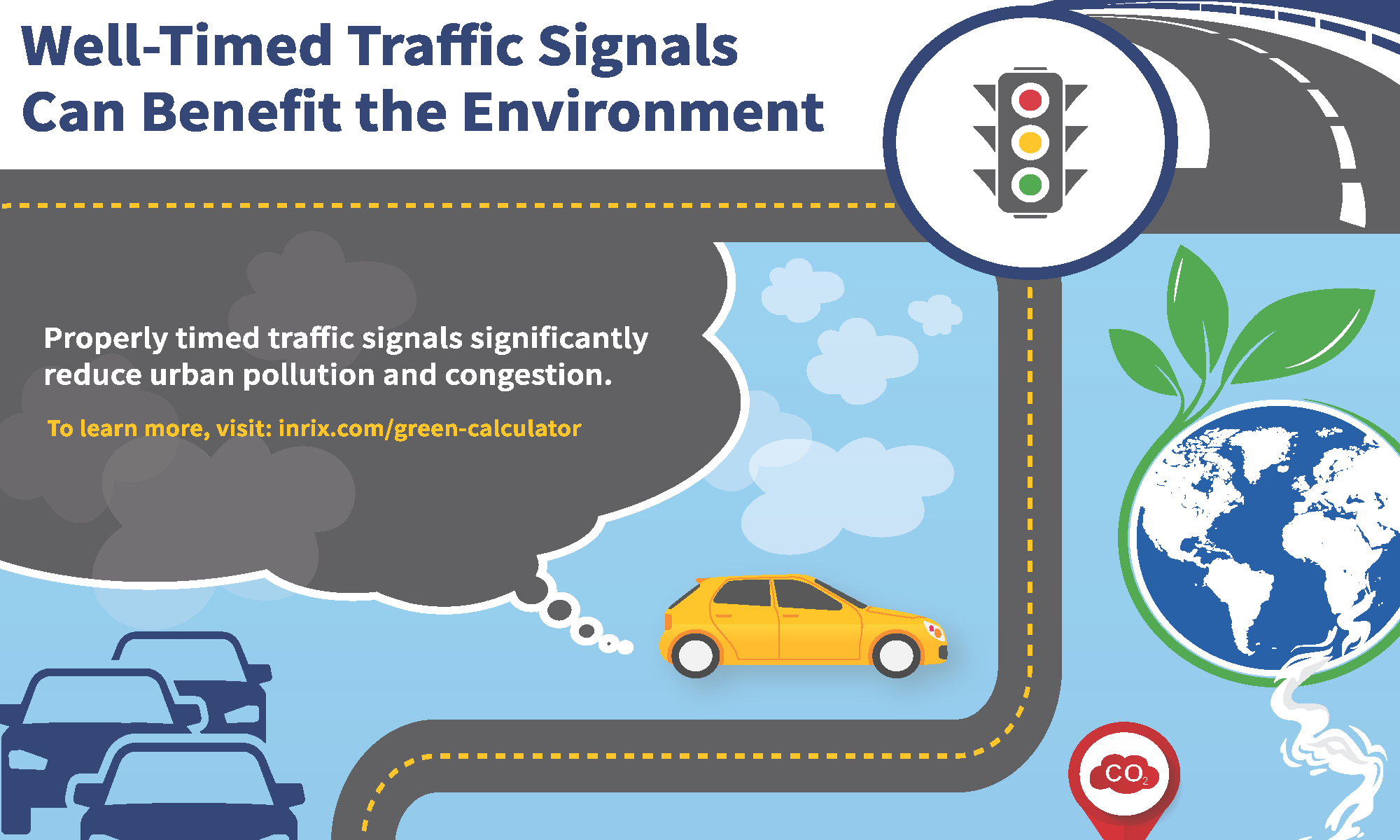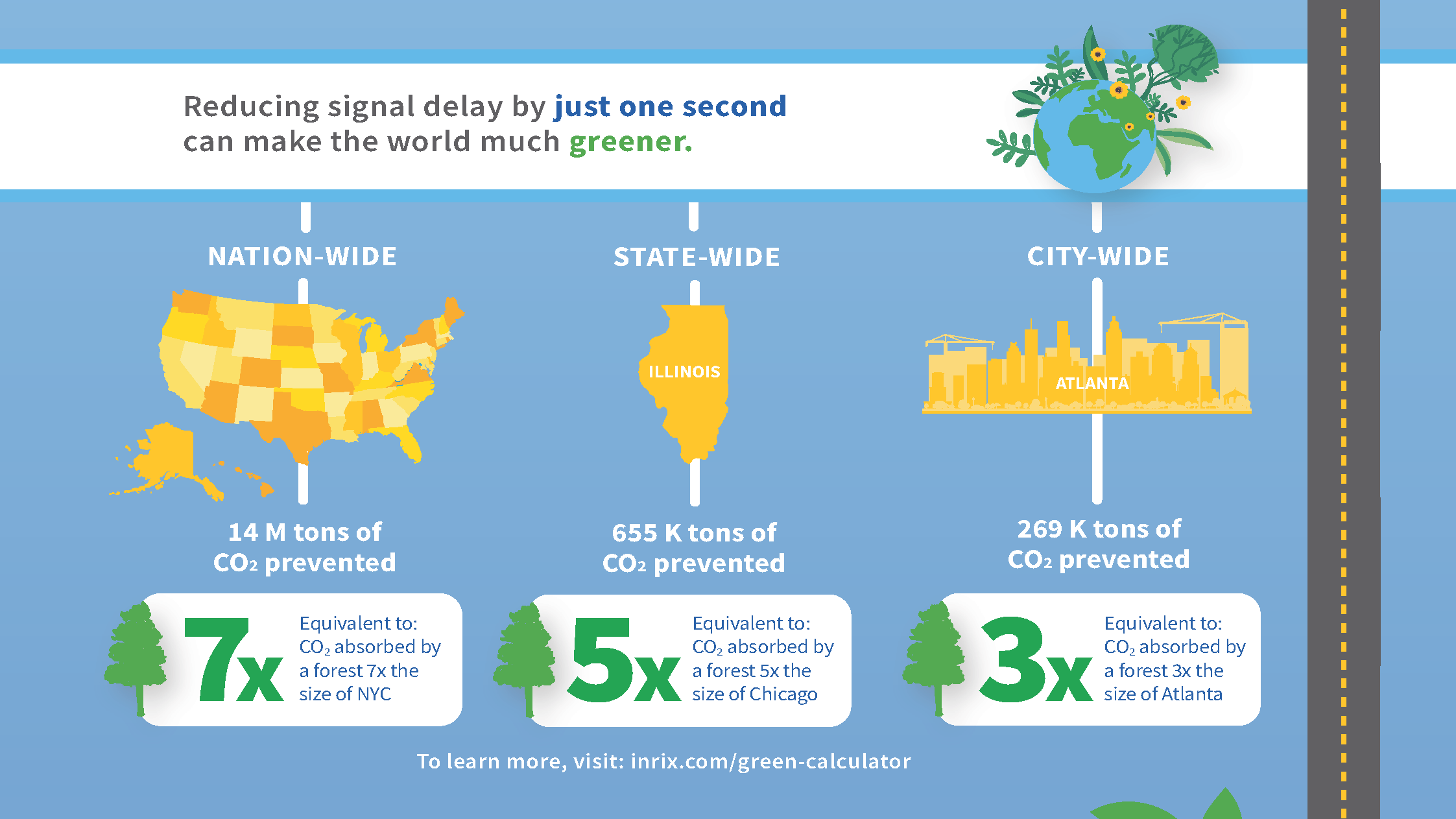
Traffic operations agencies work tirelessly to optimize their networks of signals and corridors, but the benefits of a well-timed system go beyond smooth travel times and driver satisfaction. Managing control delay has an immediate benefit of reducing carbon emissions resulting from excessive engine idling.
The recent passing of the Bipartisan Infrastructure Law, which includes $1.2 billion annually for DOTs to reduce the carbon footprint of surface transportation, will likely usher air quality metrics into a larger role within the overall transportation ecosystem in the coming years. Given that signal optimization and cleaner air go hand in hand, this presents a great opportunity for agencies that are hoping to work toward climate-related goals in addition to the typical purview of creating an optimal roadway network.
Preventable traffic delay results in higher vehicle emissions
The consumption of fossil fuels is contributing to atmospheric CO2 levels. This fact is widely accepted, but what does it mean in terms of control delay? A typical vehicle with a 3.0-liter engine generates over 2 pounds of CO2 for every 10 minutes of idling.1 When multiplied by the scale of an entire city’s network of intersections and corridors, control delay has a rather substantial impact on air quality.
A little bit goes a long way
Considering the scale of vehicle emissions resulting from control delay, what is the impact that agencies have in their ongoing efforts to optimize network performance? As it turns out, reducing control delay across an entire system by just one second makes a significant difference.

What a single second of control delay reduction over a period of ten years equates to:
- In a city the size of Atlanta: 269,000 tons of CO2 prevented—the equivalent CO2 absorbed by a forest 3.3 times the size of Atlanta
- In a state the size of Illinois: 655,000 tons of CO2 prevented— the equivalent CO2 absorbed by a forest 5 times the size of Chicago
- Across the entire United States: 14,000,000 tons of CO2 prevented— the equivalent CO2 absorbed by a forest 7 times the size of New York City.2
How technology can help
The fight to reduce carbon emissions begins at the intersection, where non-optimal signal timing accounts for a substantial portion of engine idle time. Agencies work continually to improve levels of service, but have traditionally relied upon field studies and physical hardware systems to gain signal performance insights. These methods of data collection are effective where applied, but they require significant investment and still don’t provide insights across entire transportation networks in real time.
INRIX Signal Analytics uses probe vehicle data to map out entire networks of intersections and corridors, giving agencies access to system-wide performance insights without additional hardware installation. Daily automated performance change reports allow agency managers to pinpoint underperforming signals, empowering agencies to prioritize maintenance projects based on where the most engine idling is likely to occur.
In our efforts to curb vehicle carbon emissions and improve air quality, every contribution matters. Agencies that are ready to leverage probe vehicle data as part of a comprehensive signal management strategy will produce optimal signal performance and reduce greenhouse gas emissions.

Want to learn more about how INRIX can help your agency achieve its climate-related goals? Click here for a free demo of Signal Analytics.
Also, check out our Green Calculator to see what the impact of control delay is on air quality in your city.
Citations
- EPA. “Greenhouse Gas Emissions from a Typical Passenger Vehicle.” epa.gov. EPA. 21 July 2021. https://www.epa.gov/greenvehicles/greenhouse-gas-emissions-typical-passenger-vehicle
- INRIX. “Green Signals Calculator, Reducing climate impact starts at the intersection.” INRIX.com. INRIX. 10 November 2021. https://inrix.com/green-calculator/
- INRIX Research. “Report: Signal Optimization and Climate Outcomes.” INRIX.com. INRIX. 10 November 2021. https://inrix.com/learn/report-signal-optimization-and-climate-outcomes/




